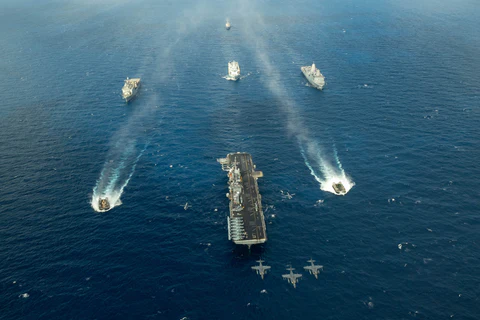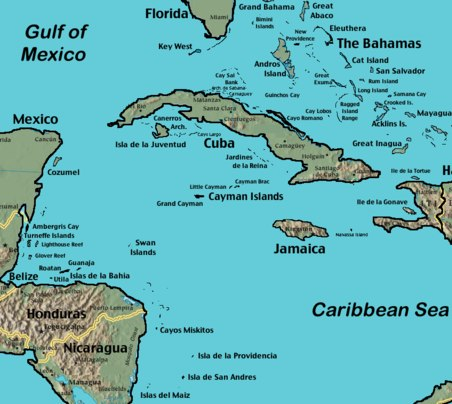Global Naval Power: The Modern Contest for Maritime Supremacy
Discussions around global power and security often highlight the importance of military capabilities, particularly naval forces, which are a critical measure of a nation’s maritime strength. But who currently boasts the largest navy in the world?
This comprehensive analysis delves into the top naval powers, examining their fleet sizes, technological advancements, and the geopolitical implications that shape these formidable maritime forces.
Masters of the Ocean: Leading Naval Forces
Assessing naval dominance involves more than counting ships and sailors; it’s about the confluence of history, military doctrine, and investment. The United States, China, and historically, the United Kingdom, are leading contenders for having the largest navy, each demonstrating unique strengths in terms of fleet size, tonnage, and global reach.
The American Naval Titan
For decades, the United States Navy has been a maritime colossus. According to official data, it operates approximately 280 deployable ships, including 11 aircraft carriers, and surpasses other navies in terms of training, technology, and global presence.
The U.S. Navy’s unmatched adaptability and strategic alliances solidify its position as not only the most extensive but also the most potent naval force in the world.
China’s Expanding Maritime Influence
China’s ambitions to dominate the South China Sea and expand its maritime influence have resulted in a rapidly growing navy. Their aggressive shipbuilding initiatives focus on both quantity and quality, boasting more than 360 ships, including aircraft carriers, destroyers, and advanced submarines.
While China’s navy is the largest in terms of sheer numbers, the quality and capability of their ships do not yet match those of the U.S. Navy.
The United Kingdom’s Evolving Naval Power
Though the Royal Navy of the United Kingdom no longer holds the global dominance it enjoyed during the British Empire, it remains a significant force. Its fleet, though smaller, is technologically advanced and critical to the nation’s nuclear deterrent.
While it may not have the largest navy, the UK’s ongoing global deployments and future enhancements suggest a resurgence in its maritime influence.
Modern Naval Capabilities: More Than Just Numbers
In today’s world, naval strength is defined not just by size but by the substance and capabilities of each fleet. The U.S. Navy’s unparalleled fleet of aircraft carriers serves as mobile airfields, China’s navy is developing formidable blue-water capabilities, and the UK’s advanced submarines maintain a silent but powerful presence. Submarines, in particular, are vital for stealth, intelligence, and delivering strategic strikes. The U.S. and the UK have significant nuclear-powered fleets, while China is rapidly expanding its submarine force.
Aircraft Carriers: Symbols of Naval Power
Aircraft carriers are the pinnacle of naval power projection, with the U.S. leading the pack with its Nimitz and Gerald R. Ford-class carriers. China is also expanding its carrier fleet, including the Liaoning and the Shandong, but still lags behind the U.S. in carrier capability.
Destroyers and Frigates: Versatile and Essential
Destroyers and frigates serve as the backbone of naval fleets, providing versatile capabilities for anti-ship, anti-air, and anti-submarine warfare. The U.S. Navy’s Arleigh Burke-class destroyers, the UK’s Type 45 destroyers, and China’s upgraded Type 052 and 055 models represent the cutting edge in naval technology.
Continuous Naval Expansion
China’s ambition for a “blue-water” navy is evident in its rapid shipbuilding and modernization efforts, aiming to develop a fleet that is not only the largest but also among the most advanced and lethal.
Geopolitical Dynamics and Naval Strategy
As nations vie for maritime dominance, alliances and naval capabilities play crucial roles. The United States solidifies its position through NATO and partnerships in the Pacific, countering China’s rise. China’s naval expansion is part of a broader strategy to secure global influence, reflected in initiatives like the Belt and Road and undersea infrastructure projects.
Defining the Largest Navy Today
Determining the largest navy involves more than counting ships. It’s about fielding a balanced fleet capable of global power projection and comprehensive maritime operations. Currently, the United States maintains this title through a combination of historical leadership, strategic foresight, and significant investment in advanced capabilities.
However, China’s rapid naval expansion and shifting global power dynamics indicate a future where naval supremacy will be more contested. The investments naval powers make today in both traditional and emerging areas of sea power will shape the maritime balance in the coming decades.
In a world where maritime dominance is crucial to national security and economic prosperity, the question of who holds the largest navy reflects not just numbers but the evolving tides of strategy and international relations. The 21st century poses a challenge to navigate the complexities of diplomacy, technology, and warfare, with the world’s leading naval powers playing a critical role in safeguarding the oceans.
In the ever-changing landscape of global affairs, the largest navy will not only be measured by its fleet but also by its capacity to steer through the uncharted waters of the future, guiding the course of history and shaping the world order.




